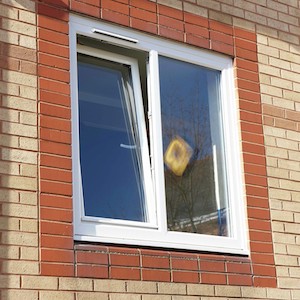The Rise of uPVC Doors and Windows: A Modern Solution for Contemporary Homes
On the planet of modern architecture and interior decoration, the demand for long lasting, effective, and elegant materials has actually grown greatly. Amongst front door with window in the market, uPVC (Unplasticized Polyvinyl Chloride) windows and doors have steadily acquired appeal. Renowned for their flexibility, durability, and aesthetic appeal, uPVC windows and doors have actually ended up being synonymous with contemporary design and functionality. This article looks into the principles of uPVC doors and windows and checks out the numerous factors homeowners and builders swear by them.
What Are uPVC Doors and Windows?
uPVC, or Unplasticized Polyvinyl Chloride, is a type of polymer that has revolutionized the building and construction and home enhancement market. Unlike conventional PVC, uPVC is stiff, resilient, and environmentally friendly, as it does not consist of plasticizers. When used in the manufacture of doors and windows, uPVC frames are integrated with glass or other products, leading to durable, weather-resistant, and energy-efficient installations.
Over the previous couple of decades, uPVC doors and windows have actually become ideal replacements for traditional wood or metal equivalents due to their remarkable efficiency and low maintenance demands.
Advantages of uPVC Doors and Windows
Remarkable Durability uPVC is extremely resistant to decomposing, rusting, and corrosion, making it among the most resilient products for windows and doors. It can endure extreme weather condition conditions, including heavy rain, strong winds, and extreme sunlight, without deforming or fading with time.
Low Maintenance Unlike wooden frames that need periodic polishing or repainting, uPVC doors and windows are practically maintenance-free. A basic wipe-down with a moist fabric is enough to keep them looking as good as new.
Energy Efficiency Modern homes are increasingly designed with energy performance in mind, and uPVC windows and doors fit the expense perfectly. Their remarkable insulation residential or commercial properties assist in preserving indoor temperatures, decreasing the requirement for extreme heating or cooling. This equates to lower energy expenses and a smaller sized carbon footprint.
Sound Insulation Urban living typically includes its fair share of sound pollution. uPVC doors and windows provide excellent soundproofing, ensuring a quieter and more serene living area.
Boosted Security Security is a top concern for any homeowner, and uPVC windows and doors are designed with this in mind. Numerous designs integrate multi-point locking systems, toughened glass, and steel supports, making them a dependable option for home security.
Elegant and Customizable Available in a wide variety of colors, surfaces, and styles, uPVC windows and doors can flawlessly mix into any architectural style. Whether you prefer a modern appearance or a more conventional feel, there are unlimited alternatives to fit your choices.
Eco-friendly The production process of uPVC generates less waste compared to other materials, and the frames are recyclable at the end of their lifecycle. This makes them an environment-friendly option for environmentally mindful property owners.
Cost-efficient Although the preliminary financial investment may be somewhat higher than some standard products, the long-term cost savings in energy, upkeep, and replacement expenses make uPVC windows and doors a smart financial option.

Applications of uPVC Doors and Windows
One of the best strengths of uPVC windows and doors lies in their flexibility. Here are some common applications:
Residential Homes: Perfect for whatever from outdoor patio doors to bedroom windows, uPVC adds a smooth and contemporary touch.
Commercial Spaces: Offices and retail outlets gain from the soundproofing and aesthetic appeal of big uPVC setups.
Health Care and Educational Buildings: Their easy maintenance and resilience make them perfect for schools and hospitals where hygiene and continuity are vital.
Renovation Projects: Replacing aging or ineffective wood or aluminum frames with uPVC models can substantially improve a home's energy effectiveness and curb appeal.
Kinds of uPVC Windows and Doors
Casement Windows: These are hinged on one side and open external or inward, permitting maximum ventilation.
Sliding Doors and Windows: Ideal for areas with minimal opening clearance, these are streamlined and space-saving.
Tilt-and-Turn Windows: These versatile alternatives can open vertically or horizontally for easy cleaning and ventilation.
French Doors: Offering an elegant touch, these double doors are a terrific option for connecting exterior and interior areas.
Bay Windows: These protruding window styles develop a cozy nook and enhance natural light.
Setup Process and Considerations
Installing uPVC doors and windows is an uncomplicated procedure when done by specialists. Nevertheless, certain elements should be thought about:
Accurate Measurements: Proper sizing guarantees a snug fit and minimizes the threat of air leaks.
Quality Glass Material: Double or triple glazing is recommended for improved insulation and security.
Expert Installation: Always depend on knowledgeable specialists to ensure that the frames are safely set up and sealed.
Conclusion
The surge in popularity of uPVC doors and windows is no accident. Their mix of functionality, looks, and sustainability makes them an exceptional choice for property and business areas. Whether you're building a new home or refurbishing an old one, buying uPVC provides a contemporary, lasting service that ticks all the boxes.
With ever-increasing advancements in technology and style, the future of uPVC doors and windows looks brighter than ever-- actually and figuratively! If you're trying to find a reputable, stylish, and future-proof way to update your space, it's time to give uPVC the attention it deserves.
